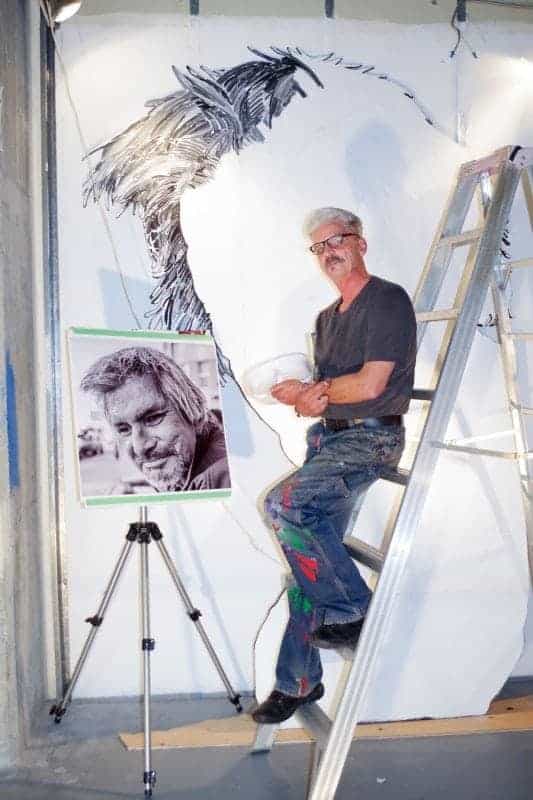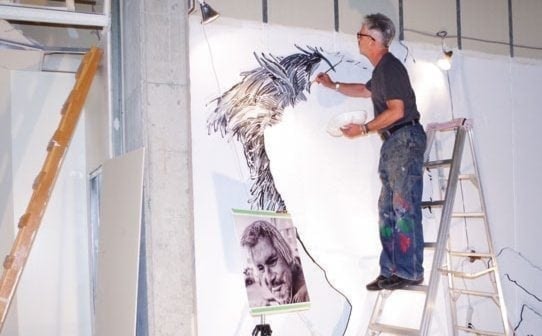Artist Terry Pamplin made the first brushstrokes Wednesday on a larger-than-life portrait of one of Yellowknife’s most well-known residents.

Criss-crossed lines of grey, white and black form the hair. Lines have been sketched onto a sheet of wood cut to the shape of a face, yet save for the first few brushstrokes, paint has yet to fill the blanks in between.
Wednesday marked the beginning of a project that started three years ago.
Pamplin is bringing to life a black and white photo of Charlie Delorme taken by Kyle Thomas.
A man who lived for 45 years on Yellowknife’s streets, Delorme was known by most Yellowknifers just as Charlie. Born in Fort Smith, Delorme spent his youth at residential schools in Fort Resolution and lived in Saskatchewan before coming back to the city.
He was known for his generosity and gentle nature. Close to the end of his life Delorme received a settlement for attending residential school and began handing out cheques to organizations around the city, carrying on a generosity that those who knew him said had always been his nature.
Pamplin remembers him as a sweetheart.
“Slight speech impediment, he tended to get really focused on things, which made him a good street cleaner and bottle collector. But he always had time to sit and talk. He was very gentle,” he said.
Pamplin wants people who view the mural to remember that heroes also live amongst the city’s most vulnerable.
“It’s oversized, bigger than life. I want that sort of subliminal thing to reflect to people when they look at it and say ‘wow, we’re paying tribute to a street person, that’s different, that’s something new’. Obviously by the size, a monumental aspect of it, it's asking to be respected,” Pamplin said.
He hopes the mural will break down some walls and help people examine their own thoughts and feelings about people who are homeless.
“We’re all the same, we’re all humans and if we could get over that not in my backyard syndrome, and we seem to be trying to, that would help tremendously so that we could start on that road to understanding and actually living together,” he said.
As for what Charlie would think of the mural, Pamplin can only guess.
“He might look at it and shake his head, ‘I don’t know, I don’t know’,” he said, smiling.
